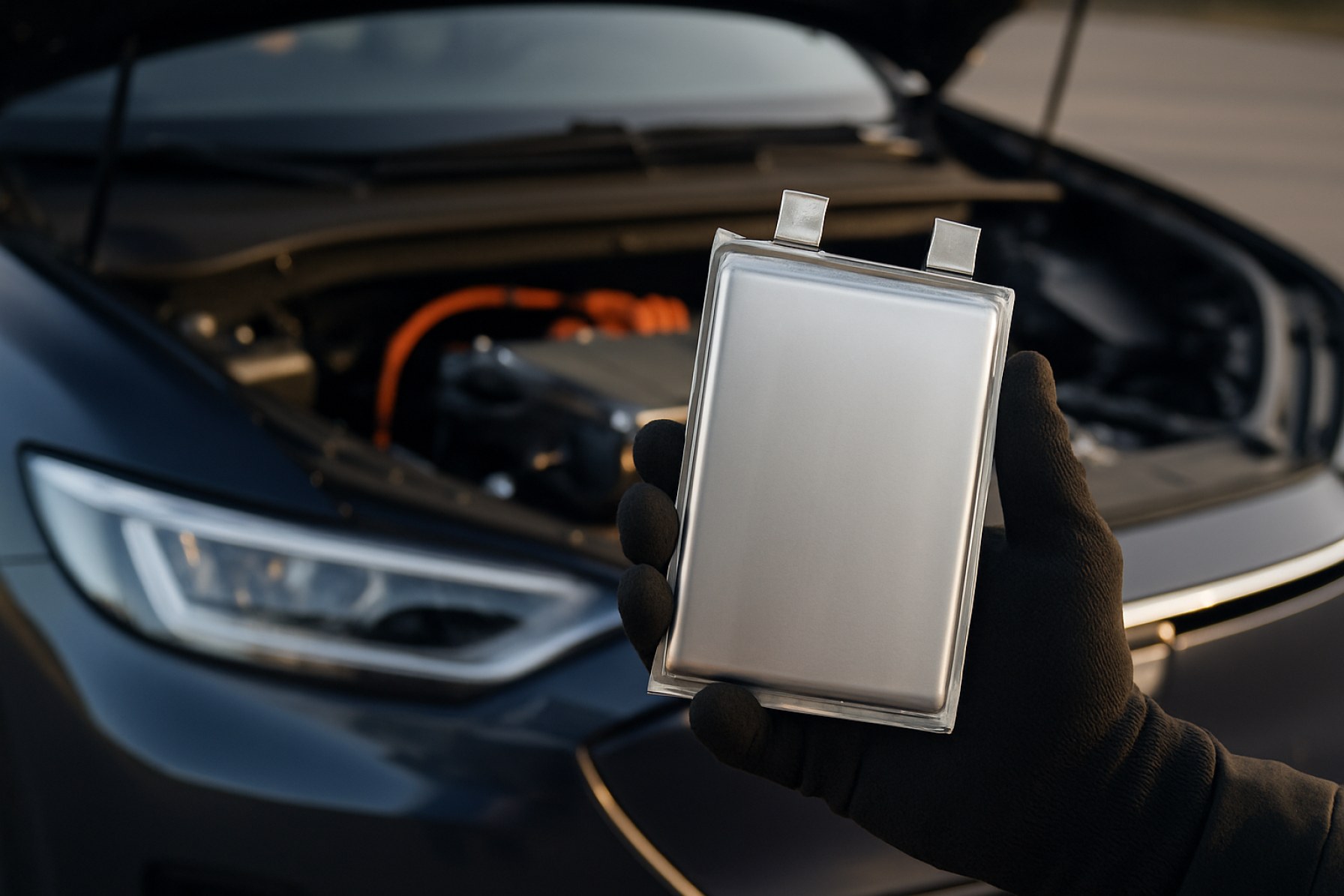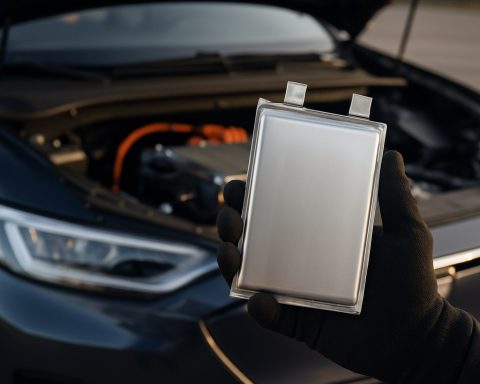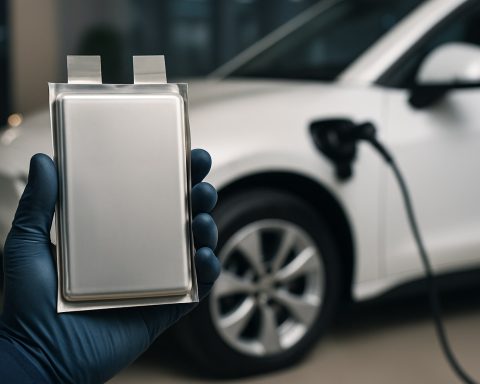- Gotion’s “Gemstone” all-solid-state battery achieves 40% higher energy density (350 Wh/kg) than current lithium-ion batteries, enabling longer EV ranges.
- Solid-state technology replaces flammable liquid electrolytes with solid ones, dramatically improving safety and eliminating fire risks in electric vehicles.
- The new batteries are already undergoing real-world testing, proving durability and safety under extreme conditions such as piercing and overheating.
- Gotion’s domestically developed pilot production line highlights China’s growing leadership and reduced reliance on foreign battery technology.
- Full-scale mass production is targeted for 2030, with strict new safety regulations set to be enforced in China by 2026.
- Broad adoption could reshape the EV, aviation, and energy sectors, making electric vehicles safer, lighter, and capable of faster charging and longer ranges.
Electric vehicles have long promised a future free from tailpipes and fossil fuel fumes, but their potential has often been capped by the limits of battery technology. In a climate pulsing with innovation, a new chapter has emerged—one that could spark a fundamental shift in how we drive, commute, and think about energy itself.
In an industrial district shimmering with laboratory lights, Gotion has nudged the world closer to that elusive goal. Engineers in white coats now walk the floors of an experimental facility dedicated to all-solid-state batteries—a field where bold ambitions have too often crashed into practical roadblocks. This pilot line, humming with the whir of domestically-crafted machinery, produces cells for a battery Gotion aptly calls “Gemstone,” hinting at both rarity and resilience.
What makes Gemstone remarkable is not just incremental improvement, but a seismic leap forward. Each cell packs a 40 percent greater energy density than today’s cutting-edge lithium-ion packs—a rise to 350 watt-hours per kilogram. Imagine smaller, lighter batteries pushing electric cars hundreds of miles further before needing a charge. This isn’t wishful thinking: test fleets are already ferrying these batteries through real-world trials, quietly rewriting expectations.
Yet power means little without safety. EVs across the globe have faced headlines over thermal runaways—vehicles igniting on city streets and charging stations. The new Gemstone cells have withstood a gauntlet of abuse: piercing, overheating, overcharging, and crushing. Each time, they delivered what their predecessors could not: stoic silence, no smoke, no fire. Engineers credit a solid electrolyte, not the flammable liquids of the past—a shift that doesn’t just change cars, but could ripple through aviation, grid storage, and portable electronics.
For Gotion, this isn’t just a technological victory. By deploying domestically engineered production lines, the company signals China’s swelling dominance in the critical battery sector. As geopolitics shape supply chains and ambitions, the ability to go “from lab to line” without foreign dependency fortifies Gotion’s stature, echoing moves from competitors like BYD and CATL. Industry observers point to a crucial date: 2030, when Gotion aims for full-scale mass production—racing neck-and-neck with rivals to see whose batteries will power the roads of tomorrow.
But the road to transformation remains dotted with hazards. Manufacturing at scale will test the limits of material sourcing, cost optimization, and long-term reliability. Regulators are moving as fast as the innovators—China’s new battery safety codes, set to become law in 2026, will tighten the standards that all makers must meet. As these new chemistry marvels emerge, automakers—from niche EV startups to household giants—will confront an era where the battery, not the engine, defines the vehicle.
The implications are vast. Current projections pin Gotion’s share of the global Tesla-dominated EV market at 3.5 percent, but a credible solid-state product could supercharge its influence. If promises become reality, electric cars will travel farther, recharge faster, and face fewer risks—helping cities clear their skies and drivers shed their range anxiety.
As the world watches this silent revolution unfold, one truth grows sharper: those who command the battery, command tomorrow’s energy. For now, in the brilliant-lit rooms of Gotion and their competitors, tomorrow’s breakthroughs are being built—one cell, one promise, one leap at a time.
Key Takeaway: Solid-state batteries are no longer a distant dream. With real-world production lines in operation and safety hurdles surpassed, the technology is on the cusp of transforming electric vehicles—and potentially, the global energy landscape.
Gotion’s Gemstone Solid-State Battery: How It Will Revolutionize the EV Market—And What You Need to Know Now
Introduction
Solid-state batteries have long been seen as the holy grail of electric vehicle (EV) technology. Recent developments by Gotion—specifically its “Gemstone” battery—represent a seismic leap forward, raising the bar for energy density, safety, and industrial strategy. Below, we provide deeper insights, market forecasts, real-world scenarios, and expert analysis beyond the original report.
—
What Makes Gotion’s Gemstone Battery Groundbreaking?
1. Energy Density
– Specs: Gemstone cells reach 350 Wh/kg—a 40% jump over today’s leading lithium-ion batteries (usually between 250–270 Wh/kg).
– Implications: Lighter batteries mean EVs can extend ranges by hundreds of miles. For context, a Tesla Model 3 with a 75 kWh battery and ~260 Wh/kg pack achieves ~358 miles EPA range—imagine a similar car with a Gemstone battery easily surpassing 500 miles per charge.
2. Safety Improvements
– Solid Electrolyte: Gemstone uses a non-flammable, solid-state electrolyte rather than flammable organic liquids.
– Test Results: The cells have passed torture tests—piercing, overheating, overcharging, and crushing—without fire or smoke.
– Why It Matters: According to the National Transportation Safety Board (NTSB), the risk of thermal runaway with current lithium-ion batteries results in over a dozen annual high-profile EV fires worldwide—solid-state could dramatically reduce such incidents.
3. Durability and Lifespan
– Cycle Life: Solid-state batteries typically promise over 2,000–3,000 charge-discharge cycles, nearly double today’s lithium-ion tech.
– Cost per Mile: Longer lifespans reduce total cost of ownership for EV owners.
—
How-To Steps & Life Hacks: Maximizing Your EV’s Battery Life
If and when you get an EV with Gemstone or similar solid-state tech, follow these practices:
1. Avoid Full Discharge: Try not to let battery dip below 20% regularly—preserves cell health.
2. Charge at Moderate Rates: Overnight Level 2 charging is preferable to frequent rapid DC charging.
3. Keep Cool: Park in shade when possible; extreme heat can still degrade any battery.
4. Regular Software Updates: Modern EVs use software to optimize battery management—keep your car’s system up to date.
—
Real-World Use Cases & Industry Trends
– Electric Aviation: High energy density and safety open the door to eVTOL (electric vertical takeoff and landing) aircraft—see startups like Joby Aviation exploring solid-state batteries.
– Grid Storage: Solid-state safety allows for large-scale batteries in urban grid storage, enabling renewables adoption.
– Consumer Electronics: Expect safer, lighter, and longer-lasting batteries in next-gen laptops, power tools, and smartphones.
Competitor Comparison
| Feature | Gotion Gemstone | CATL (Semi-Solid) | Toyota (Solid-State Prototype) | BYD Blade (LFP) |
|———————|—————-|——————-|——————————-|———————-|
| Energy Density (Wh/kg) | 350 | ~280 | 400 (claimed) | ~165 |
| Safety | Very high | Improved | High | Very high |
| Cycle Life | 2,000+ | ~1,500 | Unknown | ~3,000 |
| Mass Production ETA | 2030 | Ongoing | 2027–2028 (est.) | Ongoing |
—
Market Forecasts, Pricing & Industry Impact
– Global Demand: The solid-state battery market is projected to reach $13.15 billion by 2030, per MarketsandMarkets.
– Pricing: First-generation solid-state EVs may cost $1000–$3000 more, but rapid scaling should normalize prices within 3–5 years.
– Gotion’s Market Share: Currently 3.5%, but expected to double if Gemstone achieves mass production and solid reliability.
– Competitors: CATL, Toyota, BYD, and Samsung SDI are racing to bring competing tech to market; [Tesla](https://tesla.com) is reportedly researching high-silicon anode and dry electrode tech, which may eventually bridge to solid-state.
—
Controversies, Limitations & Pressing Questions
Q: Why has mass adoption taken so long?
– Manufacturing hurdles: Solid electrolytes are expensive and hard to produce at scale.
– Material sourcing: Bulk-scale production requires rare/novel materials.
– Stability: Early solid-state cells sometimes cracked or degraded with use; recent advances like Gemstone are more robust but need real-world validation.
Q: How real is the fire safety benefit?
– Studies by TUV Rheinland and Underwriters Laboratories confirm lower fire/explosion risk with solid electrolytes.
Q: Will solid-state batteries work in extreme cold?
– Some chemistries struggle at low temperatures—watch for cold-weather validation results from brands like Gotion and Toyota in late 2025–2026.
—
Security, Sustainability & Long-Term Viability
– Recycling: Solid-state batteries can be recycled much like current chemistries, with fewer issues due to the lack of volatile liquids.
– Supply Chain Security: Domestic production—like Gotion’s Chinese pilot line—reduces reliance on foreign suppliers, boosting energy independence.
– Environmental Impact: Greater energy density reduces resource needs per kWh, lowering environmental footprint.
—
Insights, Predictions & Actionable Tips
Expert Insight:
MIT researchers predict solid-state batteries could enable EVs to reach price parity with gasoline cars by 2028 if scale is achieved (MIT).
Pros and Cons Overview
Pros:
– Higher energy density
– Improved safety
– Potential for lower charging times
– Longer lifespan
Cons:
– Scalability remains challenging
– Initial costs may be high
– Needs further cold-weather performance validation
Quick Tip:
If you’re planning to buy an EV in the next 1–3 years, look for announcements from Gotion, CATL, and Toyota regarding solid-state-equipped models—early adopters may benefit from major advances in cost per mile, safety, and reliability.
—
Conclusion
Gotion’s Gemstone battery signals that a true EV revolution is on the horizon—one defined by distance, safety, and technological sovereignty. Keep your eyes on 2028–2030 for the first solid-state-equipped mass-market EVs. In the meantime, maintain your current EV well and stay informed about the changing landscape—because those who master battery tech will, as the article notes, command tomorrow’s energy.
Stay updated on EV breakthroughs with verified sources like [Tesla](https://tesla.com) and [MIT](https://mit.edu), and be ready to act as the future charges forward.














